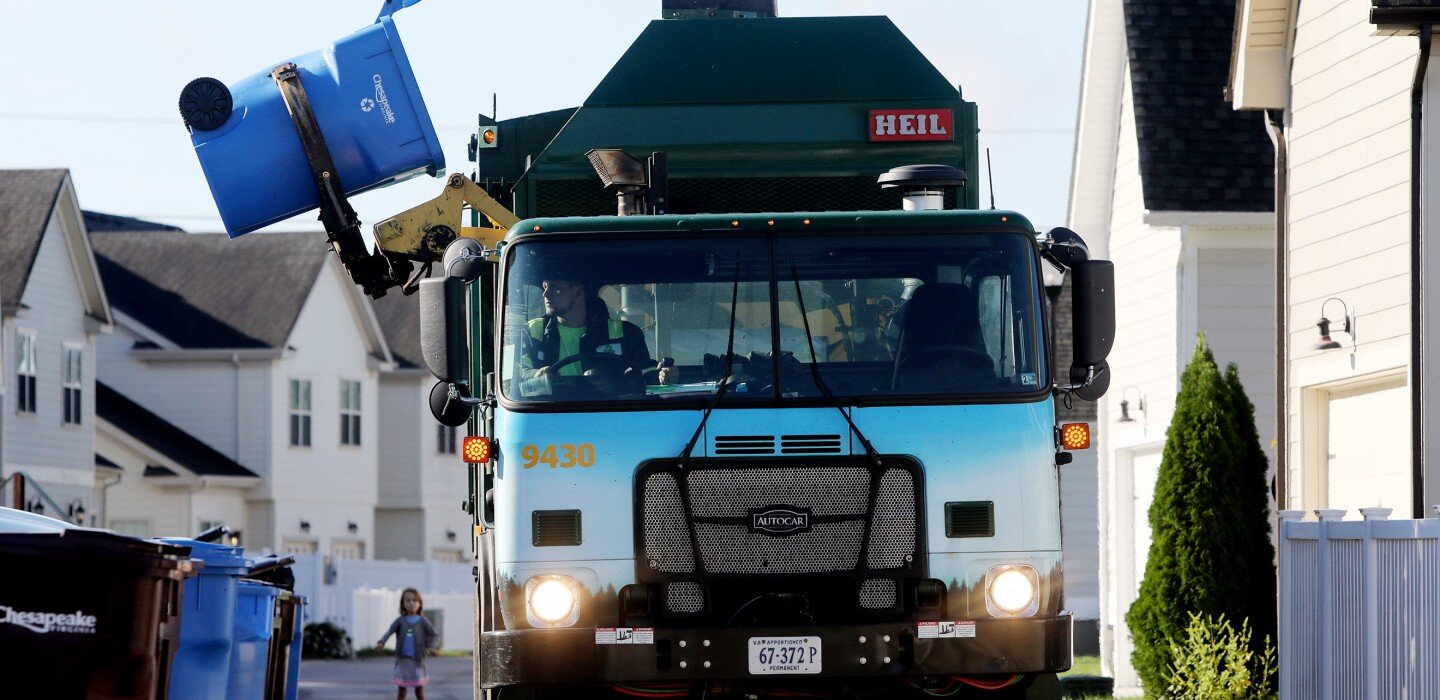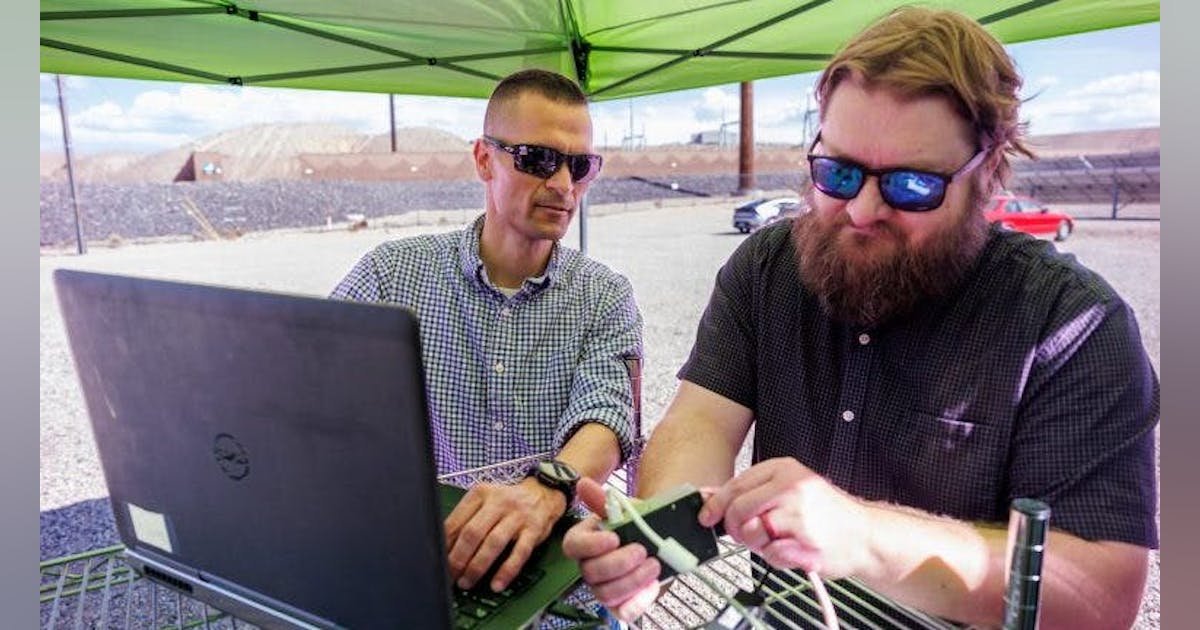AI Research
‘The Mother Teresa of Aussie supermarkets’: meet the woman cataloguing grocery deals on TikTok | Supermarkets

Maya Angelou once said “a hero is any person really intent on making this a better place for all people” and when she said that, I can only assume she had Australian TikToker and micro influencer Tennilles_deals in mind.
Who exactly is Tennilles_deals? Firstly, she’s the Mother Teresa of Aussie supermarkets. Secondly, I don’t know anything about her personally because this savvy queen isn’t marketing herself like your average influencer. She lets her work speak for itself.
The work in question? Weekly uploads of POV-style videos where Tennille meticulously goes through major supermarkets to show you what’s on special that week. Her soothing voice and steady hand shepherds you through a sea of yellow price tags. It’s detailed work, considerate and necessary.
Allow TikTok content?
This article includes content provided by TikTok. We ask for your permission before anything is loaded, as they may be using cookies and other technologies. To view this content, click ‘Allow and continue’.
A deep shame I used to harbour is that I would wait by my phone every Monday at 5pm for the Coles and Woolworths catalogues to drop. Wednesday was even more special. That’s Aldi catalogue day and nothing can rival the feeling of a niche European snack or a new power cleaning tool with a 75% discount.
For me, looking through a supermarket catalogue produces a frisson I’ve only ever experienced while scouring the Royal Easter Show showbag booklet as a child of the early 2000s. The excitement I felt running my finger over each lolly listed in the $15 (slightly offensively named) Mega Sumo Bag. The burden picking between Wonka or Wizz Fizz because I knew mum wouldn’t let me get both. A supermarket catalogue offers the same thrill: an anticipation of what could soon be yours.
But the days of flipping through paper catalogues are well and truly over. That’s why Tennilles_deals is so important, giving us tight, three-minute videos that provide us with a 360 view of each product: a walking, talking catalogue. We’re in the combat zone of the Woolies and Coles duopoly with her and she is protecting us, guiding us through each aisle. She is our mum. We are her children.
And I’m not alone in the admiration I have for this woman. There’s a reason Tennilles_deals has amassed almost 100,000 followers. She offers the people something the mega-chain supermarkets could never: a personable touch; a space where cash-strapped Aussies can vent about price-gouging.
One of her videos about the price of extra virgin olive oil starts a debate in the comments. Kerry from Tamworth says she remembers when it was only $7; we love react Kerry’s comment in solidarity. She is not alone. We are not alone. Barry from Wagga Wagga voices outrage on the Cadbury chocolate block deal. We agree that two for $10 is ridiculous and we remember the simpler $3 block days. Barry then says something out of the blue about his hot cousin, but we ignore it because we agreed about the chocolate thing and we don’t need to go any further.
The effect of cozzie livs gives the average Australian fear when entering a supermarket. Gone are the days when I would enter a store without a list and a finite plan of what to purchase. Having the opportunity to see that I can get five Chobani pots for $10 soothes me. As do the gently encouraging words of Carol from Broken Hill: “Do not pass up that Chobani deal.” It means I can enter a Woolies free from the anxiety that I’ll go over budget in pursuit of protecting my gut microbiome.
Allow TikTok content?
This article includes content provided by TikTok. We ask for your permission before anything is loaded, as they may be using cookies and other technologies. To view this content, click ‘Allow and continue’.
What Tennilles_deals is doing is building community. “Australian of the year,” one TikToker comments under her “Woolworths half price items spotted in store this week 29/7/25” post – and I couldn’t reply with three fire emojis quicker if I tried.
Unfortunately, nominations for 2026 Australian of The Year are closed, so my only way to show my respect is via this very public essay. Keep doing the Lord’s work, Tennille. The people love you and the people need you. You’re the real deal.
AI Research
House bill targets rising rural utility costs from AI data centers

Surging utility bills linked to artificial intelligence data centers would get a closer look from a trio of federal agencies under a new bipartisan bill in the House.
The Unleashing Low-Cost Rural AI Act from Reps. Jim Costa, D-Calif., and Blake Moore, R-Utah, would require the Energy, Interior and Agriculture departments to examine the effect AI data center buildouts are having on rural America.
“AI Data Centers are expanding rapidly and using more energy and water than entire cities. That energy demand is driving up utility costs for consumers,” Costa said in a press release Thursday. “My legislation ensures we take a hard look at how this growth impacts rural communities that are powering the AI industry, and make sure families aren’t left paying the price.
“But at the same time,” he continued, “it’s important that rural communities are not left behind in the new opportunities that AI data centers will provide for agricultural sciences and an improved ability to compete in this modern era.”
The rapid construction of AI data centers across the country — especially in rural areas — has led to a spike in energy demand that has dramatically driven up utility costs for consumers. The lawmakers’ press release cited a stat from PJM — the world’s largest energy market, spanning 13 states — that said data centers have led to an additional $9.3 billion in costs for ratepayers.
The AI Action Plan released by President Donald Trump in July featured several callouts to the importance of expanded energy capacity through streamlined permitting and fewer environmental regulations. The plan also sought to make federal lands “available for data center construction and the construction of power generation infrastructure for those data centers.”
Moore said in the press release that Utah is “a prime location” for AI infrastructure and data centers, but “cementing” the state’s innovation bona fides “will require identifying rural areas ready for data expansion, streamlining permitting for new energy projects, and promoting the co-location of data centers with energy facilities.”
“These efforts will power our growing digital demands without passing costs on to families,” he added. “I’m grateful to partner with Representative Costa to introduce the Unleashing Low-Cost Rural AI Act to identify other areas of the country, like Utah, that will advance solutions to meet our energy needs.”
Under the bill, the Energy, Interior and Agriculture would team up to study the impact of AI data center expansions in rural parts of the country, in addition to identifying areas that appear to be strong candidates for tech expansion. They would also assess the impact data center expansion might have on consumer costs, as well as energy supply and reliability.
The agencies would also be charged with examining ways current energy infrastructure may be upgraded to allow AI data centers to coexist alongside those power facilities. There will also be reviews of nuclear and geothermal energy, solar, wind and hydro power, battery storage, and carbon capture.
According to a piece published last month in the Tech Policy Press, global energy use by data centers has jumped 12% annually over the past seven years, with projections that it will more than double by 2030.
“As providers of the largest and most compute-intensive AI models keep adding them into more and more aspects of our digital lives with little regard for efficiency (and without giving users much of a choice), they grow increasingly dependent on a growing share of the existing energy and natural resources, leading to rising costs for everyone else,” the authors warned.
AI Research
AI, Robotics Could Sort Trash in South Hampton Roads, Va.

(TNS) — Representatives of the region’s waste disposal authority are making the rounds at city meetings this month to lay the groundwork for long-term contract extensions they say will extend use of the regional landfill through the end of the century.
Southeastern Public Service Authority (SPSA) is asking South Hampton Roads cities and counties to renew their trash contracts for 25 years instead of an upcoming 10-year extension.
The longer-term contracts are needed to ensure that SPSA’s third-party provider will invest $200 million in new facilities to sort recyclables from solid waste across the region, SPSA Board of Directors Chairman Tom Leahy told the Virginia Beach City Council Tuesday.
The new sorting process will eventually eliminate the need for blue curbside recycling cans and for residents to sort recyclables from solid waste.
“All the waste would go into a single can, collected by a single truck at the curbside,” said Leahy. “Recycling and reuse would occur after collection.”
SPSA handles hundreds of thousands of tons of waste for Chesapeake, Norfolk, Portsmouth, Suffolk and Virginia Beach, in addition to surrounding localities including Franklin and Southampton and Isle of Wight counties.
SPSA has been in need of alternative waste disposal services since the 2024 closure of the WIN Waste plant, formerly known as the Wheelabrator facility, which burned 80% of the region’s trash for decades. The former plant also converted waste into steam energy for the Norfolk Naval Shipyard. Then, 30% of the ash left over was diverted to the landfill.
The plant’s closure put pressure on the regional landfill, which will reach capacity in a few decades.
SPSA is in the process of finalizing negotiations with Commonwealth Sortation LLC, a subsidiary of AMP Robotics — a Colorado-based alternative waste disposal provider that uses artificial intelligence and robotics to extract mixed recyclables and organic material from municipal solid waste.
The process will divert 50% of SPSA’s waste from the landfill and extend the landfill’s capacity through 2095, Leahy said.
Commonwealth Sortation plans to invest approximately $200 million in new processing facilities, but wants a guarantee that SPSA’s member communities are in for the long haul. The company is currently operating out of a facility in Portsmouth and plans to expand its operations.
An agreement between SPSA’s board and Commonwealth Sortation is expected by the end of this year, but it’s contingent on most of the localities agreeing to the 25-year extension, Leahy said.
The Virginia Beach City Council is scheduled to vote on the contract extension Oct. 7. Cities’ agreements with SPSA are scheduled to renew for an additional 10 years in 2027. The proposed amendment would extend each localities’ contract to June 30, 2052.
“Recycling’s pretty popular with our citizens, and this will make everybody with a black can be a recycler,” said Vice Mayor Rosemary Wilson. “It’s really good news environmentally for all of us.”
Tipping fee increases associated with the new process are not expected to be higher than what large cities like Virginia Beach that offer curbside recycling are already incurring.
“We won’t necessarily see a cost increase associated with this transaction,” said City Manager Patrick Duhaney.
Several cities recently incurred cost increases when they renewed recycling contracts with TFC Recycling, including Virginia Beach and Norfolk. Chesapeake did away with curbside recycling in 2022 as costs increased.
The average number of homes using curbside recycling in Virginia Beach was 125,000 in 2024. Virginia Beach residents currently pay for curbside recycling as part of their trash collection. The solid waste collection fee is $30.55 per month.
Virginia Beach’s contract with TFC Recycling will overlap with the new SPSA contract and general fund support may be needed to cover the cost, City Manager Patrick Duhaney said.
©2025 The Virginian-Pilot. Visit pilotonline.com. Distributed by Tribune Content Agency, LLC.
AI Research
Sandia National Laboratories’ Research Team Develop AI Algorithms to Detect Physical Issues, Cyberattacks within Grid

Researchers at Sandia National Laboratories have developed AI algorithms to detect physical problems, cyberattacks and both at the same time within the grid.
“As more disturbances occur, whether from extreme weather or from cyberattacks, the most important thing is that operators maintain the function and reliability of the grid,” said Shamina Hossain-McKenzie, a cybersecurity expert and leader of the project. “Our technology will allow the operators to detect any issues faster so that they can mitigate them faster with AI.”
Adrian Chavez, a cybersecurity expert involved in the project, added that as the neural network runs on single-board computers, or existing smart grid devices, it will be able to protect older equipment as well as the latest equipment lacking only cyber-physical coordination.
The package of code works at the local, enclave and global levels. At the local level, the code monitors for abnormalities at the specific device where it is installed, at the enclave level, devices in the same network share data and alerts to provide the operator with better information on whether the issue is localized or happening in multiple places and at the global level, only results and alerts are shared between systems owned by different operators.
Thus, operators will receive early alerts of cyberattacks or physical issues their neighbours are seeing and protect proprietary information. The Sandia team collaborated with experts at Texas A&M University to create secure communication methods, between grids owned by different companies, Hossain-McKenzie added.
According to Logan Blakely, a computer science expert who led development of the AI components, the challenge in detecting cyber-physical attacks is combining the constant stream of physical data with intermittent packets of cyber data.
Physical data such as the frequency, voltage and current of the grid is reported 60 times a second, while cyber data such as other traffic on the network is more irregular, Blakely said. The team used data fusion to extract the important signals in the two different kinds of data.
The team also used an autoencoder neural network, which classifies the combined data to determine if it fits with the pattern of normal behavior or there are abnormalities with the cyber data, physical data or both, Hossain-McKenzie said. For example, an increase in network traffic is predicted to indicate a denial-of-service attack while a false-data-injection attack can include atypical physical and cyber data, Chavez added.
Autoencoder neural networks do not need to be trained on data labelled with every type of issue coming up as compared to other kinds of AI, Blakely said. However, the network only requires huge amount of data from normal operations for training.
After the team constructed the autoencoder neural network, they put it to the test in three different ways. First, they tested the autoencoder in an emulation environment, which includes computer models of the communication-and-control system used to monitor the grid and a physics-based model of the grid itself, Hossain-McKenzie said.
The team used the environment to model a variety of cyberattacks or physical disruptions, and to provide normal operational data for the AI to train on. The collaborators from Texas A&M University assisted with the emulation testing.
Secondly, the team incorporated the autoencoder onto single-board computer prototypes that were tested in a hardware-in-the-loop environment, Hossain-McKenzie said. In hardware-in-the-loop testing, researchers connected a real piece of hardware to software simulating various attack scenarios or disruptions.
When the autoencoder is on a single-board computer, it can read the data and implement the algorithms faster than a virtual implementation of the autoencoder can in an emulation environment, Chavez said. Hardware implementations are a hundred or thousand times faster than software implementations, he added.
The team is working with Sierra Nevada Corporation to test Sandia’s autoencoder AI on the company’s existing cybersecurity device called Binary Armor, Hossain-McKenzie said.
The team is testing both formats, single-board prototypes interfaced with the grid and the AI package on existing devices, in the real world at the Public Service Company of New Mexico’s Prosperity solar farm as part of a Cooperative Research and Development Agreement, Hossain-McKenzie said. The tests started in summer 2024, Chavez said.
The project expanded upon a previous R&D 100 Award-winning project called the Proactive Intrusion Detection and Mitigation System, which focused on detecting and responding to cyber intrusions in smart inverters on solar-panels, Hossain-McKenzie said. The team is expanding upon the autoencoder AI in similar projects, she added.
The team filed a patent on the autoencoder AI and is looking for corporate partners to deploy and hone the technology in the real world, Hossain-McKenzie said. The autoencoder is expected to be used to protect other critical infrastructure systems such as water and natural gas distribution systems, factories, even data centers, Chavez said.
The project is funded by Sandia’s Laboratory Directed Research and Development program.
-

 Business2 weeks ago
Business2 weeks agoThe Guardian view on Trump and the Fed: independence is no substitute for accountability | Editorial
-
Tools & Platforms1 month ago
Building Trust in Military AI Starts with Opening the Black Box – War on the Rocks
-

 Ethics & Policy2 months ago
Ethics & Policy2 months agoSDAIA Supports Saudi Arabia’s Leadership in Shaping Global AI Ethics, Policy, and Research – وكالة الأنباء السعودية
-

 Events & Conferences4 months ago
Events & Conferences4 months agoJourney to 1000 models: Scaling Instagram’s recommendation system
-

 Jobs & Careers2 months ago
Jobs & Careers2 months agoMumbai-based Perplexity Alternative Has 60k+ Users Without Funding
-

 Podcasts & Talks2 months ago
Podcasts & Talks2 months agoHappy 4th of July! 🎆 Made with Veo 3 in Gemini
-

 Education2 months ago
Education2 months agoMacron says UK and France have duty to tackle illegal migration ‘with humanity, solidarity and firmness’ – UK politics live | Politics
-

 Education2 months ago
Education2 months agoVEX Robotics launches AI-powered classroom robotics system
-

 Funding & Business2 months ago
Funding & Business2 months agoKayak and Expedia race to build AI travel agents that turn social posts into itineraries
-

 Podcasts & Talks2 months ago
Podcasts & Talks2 months agoOpenAI 🤝 @teamganassi

